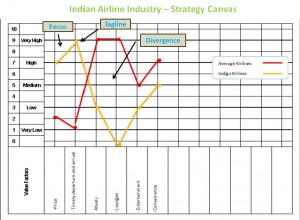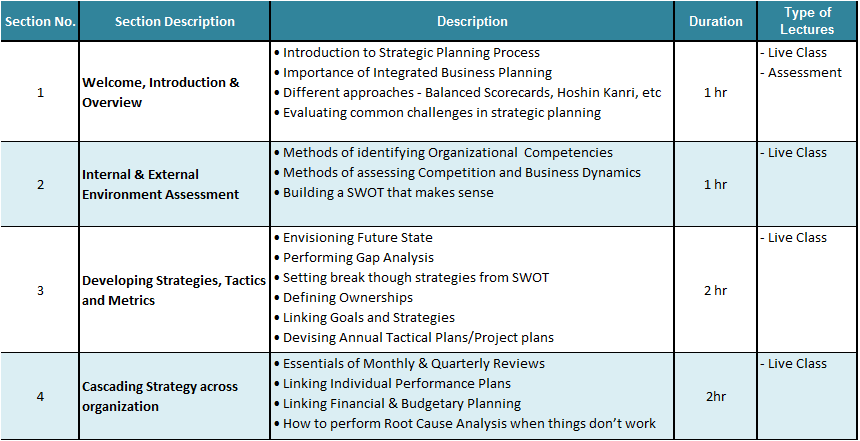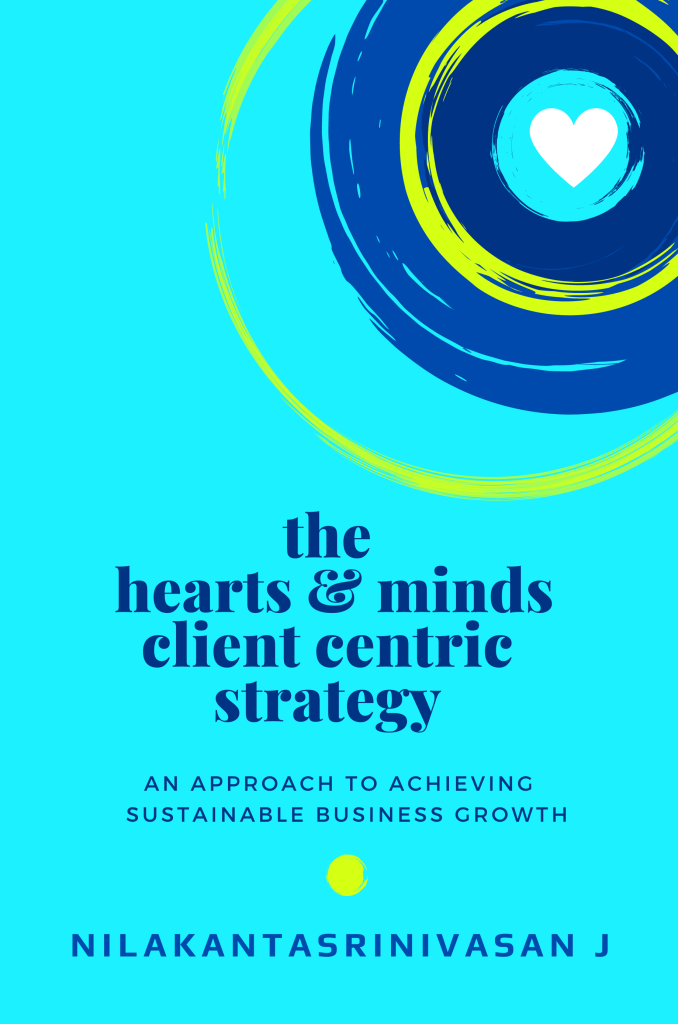There are the top 10 challenges in strategy implementation in the order of significance. Does your organization face these challenges? And what are you doing about it?
- Lack of ‘Individual Ownership & Joint Accountability’ for organization goals
- Non-synchronized effort between leaders/functions in applying a strategy
- Budgetary Planning, Strategic Planning & Performance Planning non-synchronized
- Leaders give great talks on prioritization, but they don’t prioritize strategic initiatives
- Strategic Initiatives aren’t scoped well – punctuated with long duration & unrealistic goals
- Too many strategic initiatives run concurrently leading to strategic fatigue
- Most strategic initiatives bet on the same best guys around leading naturally to under performance
- Strategic Initiatives evolve from a wish list rather than from environment scanning
- No QUANTITATIVE measures of success for strategic initiatives
- No systematic mechanism to adapt strategy to changes in external & internal environments
Interview: Organizational Strategy Challenges & Solutions
Extract of an interview of Neil published in Consultants Review Magazine about Organizational Strategy Challenges and Solutions
The economy stands at a crucial juncture now and constant endeavour for excellence and accuracy has come to be more pivotal than ever before.
The goal now is to focus on industry needs with a futuristic perspective, in order to foresee the norms of tomorrow. Canopus Business Management Group (CBMG) is a business services firm that focuses on strategy implementation & business transformation to make them future fit, and it is this approach that has brought them a fair amount of success already. Incepted in 2009, by the MIT educated Nilakantasrinivasan Janakiraman(Neil), CBMG started operations in Chennai, with the vision of bringing something fresh to the consulting space. Read More
We are delighted and honored to share that Consultants Review Magazine has selected Canopus Business Management Group among 25 Most Promising Management & Strategy Consultants in India.
An extract from May 2015 Issue:
“Over the past decade the corporate world has witnessed dramatic shifts in its form, fi nance, marketing,HR,and outsourcing have all faced the change that is slowly gripping the entire sector. Devising business strategies, global marketing,and innovating new products now form the core of developing a business. In this changing arena, defi ning management & strategy consultants only in the role of advisors would be an understatement. Read More.
Most Promising Management & Strategy Consultant
Course Highlights
- Learn about the basic elements of good goal and strategy plan
- Assess where your organization stands in strategy execution
- Understand what it takes to move the plan from paper to implementation
- Create a broad outline of information, resources and people required
Course Description
Annual Goal and Strategy Setting is a very complex process and is largely driven by the company’s culture and tradition. But there are few important elements to this exercise, without which the whole exercise will be waste. In this course, you will learn about the basic elements of good goal and strategy planning exercise, assess where your organization stands when it comes to strategy execution, so that you can create a broad outline to pull your entire organization together around a single game plan.
What makes this course unique?
In my personal experience, many organizations do this activity like any other team outing and end up missing several important elements which impacts the organization’s chances of meeting their goals.
This is a no-nonsense crash course with practical approach to lead an annual goal and strategy session.
Who should take this course?
If you are responsible for coordinating Annual Goal and Strategy Planning for your organization or your department, then you will certainly find this course useful.
- Finance Managers
- Strategy Team Members
- Business Heads
- Analysts
Course Start Date: March 15, 2015
Course Package:
- 1 Week of study
- 6 Hour lecture covered in 3 days. 2 Hours of commitment each day
- Assess where your organization stands when it comes to strategy execution
Course Fees: Rs.5000
Make Payment here
Targets Series#2 : Matsushita example of Top-down approach to deploy targets
Here’s a live case that I read from The TQM Magazine, Volume10, Number 6, 1998 by Yoshio Kondo. I liked it and thought it is very apt and also interesting to read.
“Matsushita Electric Industries’ Car Radio Division received a demand from one of its customers for a 10 percent price reduction. The leadership team put their heads together to try to meet this request but, after much discussion, reached the conclusion that they would be unable to achieve such a large price cut even by implementing all the cost reductions they could think of. They therefore decided to convey this to the customer. When this information reached the company’s chairman, Konosuke Matsushita’s ears, he said, “Whenever we receive a demand for a price reduction from our customers, it is our practice at Matsushita to work out how we can achieve an even greater cost reduction – in this case 15 percent. Please think about this again”. After receiving this instruction from their company’s founder, everyone involved started investigating the possibility of reducing costs even more thoroughly and eventually succeeded in cutting them by 13 percent. When this success was announced to him, Matsushita reportedly made a personal visit to the automobile company that had requested the price reduction and said, “Thanks to your request for a 10 percent price reduction, my company has succeeded in reducing its costs by 13 percent. We are extremely grateful to you”.
It is an example of successful top-down deployment. What made it work?
- Demand came from customer directly
- Matsushita’s stature & position – People had immense respect for him, but he was also the Chairman & Founder
- This was in Japan and happened in the middle of last century
You and I know that it’s not possible for Managers to demonstrate such authority in today’s matrix culture. All the fat has already been sucked off and there’s nothing much to squeeze further in the system.
In spite of these deficiencies, it’s easy for a manager to give a one-way message and walk-off. So top-down is still very popular.
There’s a great opportunity to adapt ‘catch-ball’ technique which overcomes most deficiencies of top-down approach.
A Hoshin Kanri (Policy Deployment) X-matrix is a one page document strategic plan of any organization that includes goals, strategies, strategic projects (initiatives) and owners. It is also known as Policy Deployment (PD) document.
It is a X-shaped matrix diagram linking the aspects mentioned above. One wouldn’t miss the big X at the middle of this document.
The organizational X-matrix is owned by the CEO/President but it is jointly constructed by the leadership team of an organization and with the guidance of a Hoshin Kanri (Policy Deployment) expert. It is one of the key deliverable of the Hoshin planning session. Many organizations are used to voluminous strategic plan, but in Hoshin Kanri (Policy Deployment) approach, even for large conglomerate, strategic plan is a single page document. A X-matrix is a very good example of how Hoshin Kanri (Policy Deployment) uses visual management style. Being simple one page document, a X-matrix doesn’t go into a filing cabinet but instead, it is prominently (yet confidentially) displayed in the board room. Many Japanese organizations have the culture of conducting their monthly strategic review meetings around the displayed X-matrix.
X-matrix is created in the beginning of the financial year and updated every month. Once in a year, the X-matrix and its contents are revisited by the leadership team.
Any strategic plan has to be cascaded to the entire organization. In Hoshin Kanri (Policy Deployment), the X-matrix created at organizational level is cascaded to various functions or business units as child X-matrices. There are clear linkages that are established between the parent and child X-matrices.
There are several variations of X-matrix. Some organizations focus on strategy deployment while others focus on metrics deployment. When an organization over emphasizes on metrics deployment, Hoshin Kanri (Policy Deployment) approach tends to replace balance score card approach.
In simple terms, strategy is the ‘how’ part of achieving goals under certain conditions, constraints, restrictions and assumptions. In ancient Greece the word ‘strategos’ was referred to as the role of an individual – a general in command of an Army. A good strategy should equally focus on execution & communication. In Blue Ocean Strategy, there are three simple characteristics or yard stick used to evaluate strategies – Focus, Divergence and Compelling tagline.
In order to understand these characteristics, knowledge of Blue Ocean Strategy Canvas is essential. You can learn more about Strategy Canvas here.
To unlock a blue ocean, the company’s value curve should depict these three characteristics.
Focus
A good strategy should have a strong focus, and a company’s strategic profile should clearly show it.
A company should not diffuse its efforts on all the factors of the competition, instead focus on the key factors on strategy canvas.
Focus is the key factors where the company has raised its performance or standard in comparison to industry peers to differentiate them. Consider the Indian airline industry where in the early 2000 industry performance was punctuated with late departures & arrivals, coupled with southward moving prices. Indigo Airline’s strategy focused on the factor of timely departure & arrival. It ensured that all its resources are diverted to achieving this goal. Unlike like other airlines like Kingfisher, Jet Airways &p; Indian Airlines it didn’t focus on hot & gourmet cuisine or passenger entertainment, etc
Thus Indigo’s relentless focus on the key factor (On time Depature & Arrival) that it raised on the strategy canvas has not only profitable, but helped it built a loyal customer base in a short period.
Thus the first characteristic, Focus is all about execution of key factors that the organization has raised in its strategic canvas. Customers will have to feel the differentiation.
Divergence
The value curve of blue ocean strategy always stands apart from the competitors. Reactively formed strategies tries to keep up with the competition, thus loosing uniqueness.
Divergence helps differentiating company from the industry’s average profile and helps them to achieve a leap in value on strategy canvas, such as low-cost business model. It makes the company to stand apart from the rest.
Divergence is where the company has reduced or eliminated certain factors in strategy canvas which will have an impact on the cost without affecting product and service quality and voice of the customer.
Indigo Airlines created a strategy that aimed to differentiate itself from Jet, Sahara, Air India. As a result, it created a service that is better on timely departure & arrival, but reduced & eliminated factors like food, entertainment, etc. thereby creating a value curve on strategy canvas.
Free Download
Get your copy of E-Book “The Hearts & Minds Client Centric Strategy” on how to achieve sustainable business growth . It contains cases, examples, detailed implementation approach along with ideas to achieve sustainable growth, especially for B2B firms. (Pages : 51)
Divergence is creates differentiation not by merely providing ‘more’ but instead by not providing or providing ‘less’. It drives the company to resist the old logic of benchmarking the competitors in the industry and look across alternatives.
Compelling tagline
A good strategy has a clear-cut and easy to communicate tagline. Unless the customers and employees aren’t informed about the strategy, it’s unlikely they would appreciate them. ‘Tagline’, a term that’s close to the heart of marketing folks is also evolved from the strategy canvas of the Blue Ocean Strategy. In simple words, it is a factor(s) which is newly created by the organization and not present in the competitors of the industry.
A strong and truthful tagline on the strategy canvas will give clear message on cost-value offering and create interest to the customers. The effectiveness and strength of a strategy will be determined by a strong tagline.
IndiGo airline created a tagline on strategy canvas by advertising that ‘We believe that we can offer the lowest fares by staying focused, which keeps our costs down without cutting corners or compromising on things that matter.’ They don’t miss to mention about their on-time arrivals performance.

Thus the three characteristics of blue ocean strategy will guide the company to achieve a breakthrough in value for both the customers and for themselves. Focus will help to retain customers, divergence will reduce the cost to the company and the compelling tagline will invite customers to the company.
6 Ways to find out if your organization’s strategic planning process is doing its job!
I’m sure your organization has a strategic planning process in place. And if you are responsible for this process, or if you are one of the key stakeholders in strategic planning and policy deployment, this note will help you examine and assess the impact of your organization’s strategic planning process. In simple words, you will understand the measures of success for strategic planning process.
Strategic planning process in most organizations is synonymous with the annual goal setting exercise. While these two activities have certain common threads; strategic planning process isn’t restricted to just goal setting.
Strategic planning process is essentially meant to stir the organization towards its long term goals. To be more specific; strategic planning process should help organizations to better organize themselves to:
- Establish priorities on what organization will accomplish in the future
- Force organizations to make choices on what they will do, and what they will not do
- Draw the entire organization, together, around a single game plan for execution
- Depict a broad outline that shows where resources will get allocated
Thus a strategic planning process is iterative and cyclical (occurring yearly).
In my experience, the following are some of the key measures of success for a strategic planning process:
Reliable – It is important to ensure timely completion of some of the key deliverables, such as: agreement on organization goals, identification of strategies, commencement of strategic initiatives, inputs to budgetary planning, assignment of targets to individuals, etc. These are all very time critical, and any delay can result in misalignment. It can even render the whole process counter-productive. Thus, timely completion is one of the most important measures of success for any strategic planning process.
Buy-in from Leaders – While the ownership of the organizational strategy and its deployment resides with top leaders; there should be acceptance among senior and mid-level leaders to: strategic goals, assumptions, etc. Each leader must own organizational goals, including their accomplishments and failures. Several goals may require shared responsibility among functional/business heads, apart from overall ownership. Level of participation and engagement from leaders is a good measure of their buy-in
Integrated Plan – A good strategic plan should sync with financial planning process. If we end-up with budgeted revenue or cost figures that don’t align with specific strategies; or if we have no budgets allocated for strategic initiatives, then that’s a clear indication of misalignment.
Visionary Goals –The strategic planning process should facilitate a strong linkage between the organization’s core purpose of existence; its guiding principles; and a compelling desire for a positive future; all looking beyond just “money-making”. All these require quality leadership time and bandwidth. A quick review of the nature of goals, targets, underlying purpose, etc., can reveal its effectiveness.
Flexible – Because the process involves several functions and leaders; it is likely that the tasks may not happen as per schedule. It is also likely that leaders will bring in their personal style for deployment. The governance of strategic planning, thus, should accommodate such variations, while maintaining the overall approach. Inflexibility in planning process show up during execution. Unrealistic goals, lack of ownership for failures, finger-pointing, delays in reporting performance, etc., are signs of inflexibility.
Deployment to Employees – Effective implementation of a strategic plan resides in how well we can cascade these goals to various functions, and further on to individual employees. At least, if significant roles have their performance goals and incentives linked to strategic goals; then, it is a good indication of a well cascaded plan.
Each of the 6 measures of success would help you assess the effectiveness of the strategic planning process in your organization. However, if you wish to improve its efficacy & effectiveness, then you can take up our exclusive free on-line survey to access where you stand and what needs to be improved.
Q – How to solve Ownership Issues; A – Catch Ball Technique
It is indeed this topic very close to heart for many of us, isn’t it?
Each of us will have stories of frustration to share on how we were appraised poorly, received low bonuses, promoted last, long arguments with boss & colleagues and in some cases even lost our jobs for no fault of ours!
When goals come from seniors, in good spirits, it is assumed as everyone’s responsibility to meet them. But when really things don’t go as they were planned, scapegoats are born.
I have seen lack of responsibility in the following situations:
a) Ownership issues for failures between departments. For example, if there’s staff attrition, is that HR or Line Manager who owns this failure b) Ownership issued within homogeneous teams. For example, lack of ownership on team sales target among sales staff of that team
While (a) has been difficult to resolve traditionally, (b) is not so much a problem when the Manager exercises good control (Top-down).
Catch-ball technique, a part of Hoshin kanri or Policy Deployment Planning is a very effective method to encourage employees to take ownership and empower them.
As the name suggests, the ‘ball’ of responsibility is thrown between team members till consensus is arrived. In essence, it is a series of constructive and dialogue-based process where team members discuss and agree on ownership of targets.
Unlike the traditional top-down approach, manager doesn’t thrust targets on his team. In this technique, she proposes a target and allows the team to debate on the capabilities, constraints, resources, etc., before they agree on a goal. If they disagree, the manager has an opportunity to review the target, as she too hasn’t agreed the target with her manager.
Thus the mechanism involves several rounds of discussion between team members before goals are agreed. From an organizational perspective, the CEO/business leader gets to know by the end of ‘catch-balls’ if the target set by him is achievable or not; and the constraints associated with it.
In my personal experience, as people get to discuss about the target in advance, several opportunities arise, such as:
Systematic: A lot of planning activity gets accomplished upfront, rather than putting it for later months Think-tank: There is thorough understanding about the target – what needs to be accomplished, when, how, challenges, levers, etc, among all the team members Team Work: Team members get opportunity to mingle and understand each other better. Especially in today’s environment where staffs rotate every 2 years and we end up dealing with new members every time, these catch-ball sessions help.
Shared responsibility: Many targets require participation from other functions, like the above example of staff attrition. So in this case, may be attrition due to ‘managerial’ issues can be owned by line management and those due to ‘compensation & retention’ by HR. Something like this cannot be agreed till such time discussions happen. In preparation to such achieving such a target, a robust data collection mechanism at the time of staff exit has to be implemented. Such aspects don’t get discussed in traditional goal setting.
Empowerment: When targets are not achievable, it encourages dialogues with Managers or Senior Managers on why it can’t be achieved. Such situations usually force managers to empower their teams. So, even when a manager is ‘control-freak’, he is forced to empower his team. Culture: Due to the nature of discussions, when catch-ball technique is used over 1 or 2 years for annual planning sessions, there is a big change in company’s culture. People are open and transparent. They see each other eye-to-eye and they learn to agree to disagree.
Accountability: Many times, when targets are unachievable, people accept such targets only to see how they can palm it off later when things don’t work. They probably know of other constraints that can be their ‘official’ reasons for failure – clearly cases of procrastination and finger pointing. Such situations don’t occur as ‘Catch-ball’ encourages discussion and subsequently ‘Kanri’ ensures rigorous monthly monitoring. Stretch Targets: As illustrated in the article of ‘bottom-up’ example, teams tend to achieve more than the target and that too willingly. In order to learn more about how catch-ball technique is executed, refer to my article titled ‘How to implement Catch-ball Technique’
Bando example of bottom-up approach to deploy targets
Here’s a live case that I read from The TQM Magazine, Volume10, Number 6, 1998 by Yoshio Kondo. I liked it and thought it is very apt and also interesting to read.
“Bando Chemical Company, for a long time had been implementing the top-down type of planning, in which production was carried out in accordance with targets set by the factory manager. In the first 2 weeks of the month, there used to be sag in production but there used to a catch-up in the last leg.
After much investigation and deliberation, this factory decided to change its system for setting the monthly production quotas. Under the new system, the factory manager would first propose the draft monthly production target and explain carefully why it was necessary to achieve that target. The proposal would then be thoroughly discussed by the people in the workplace. When this system was first implemented and the individual values determined as a result of the discussion were collated, the final value turned out to be a little less than that originally proposed by the factory manager.”
When such situations we often try thrust higher targets on people in order to meet the originally proposed value. Though we start our with a bottom-down approach we end up with top-down. To an employee, it looks like an eye-wash.
“This factory took a different approach. It was decided to trust their commitment and enthusiasm and leave the total arrived at as the official monthly production target.
A curious thing happened when the setting of targets was changed from top-down to bottom-up in this way. The sag in the monthly cumulative total production graph occurring at the beginning and middle of the month disappeared, and the production proceeded more or less in accordance with the target line. Also, the monthly target was consistently achieved. Another interesting thing was that, although the target value established as a result of discussion in individual workplaces in this way started out slightly under the factory manager’s proposed draft target, it increased month by month and at the end of six months, was approximately 20 percent higher than the factory manager’s proposal, a result originally thought to be out of the question.”
So again, this is an example of successful bottom-up approach. We wouldn’t ever adapt this method. It is time-consuming and many managers feel defeated to accept a target lesser than what they initially proposed!
It sounds impractical in our culture and current conditions.
There is no doubt that it is a powerful way to get team energized, but lacks universality.
There’s a great opportunity to adapt ‘catch-ball’ technique which overcomes most deficiencies of bottom-up approach and top-down approach.

Hoshin Kanri Policy Deployment
Sometimes it can be really frustrating to see that valuable time is lost in firefighting. When strategic planning and execution are done in a systematic manner, using Hoshin Kanri Policy Deployment, there will be upto 50% immediate impact. There are various methods that can be adapted to accomplish this. Suggestions in the Hoshin Kanri (Policy Deployment) section of the resources would be invaluable. Why don’t you check them out.Sign-up for collaborat newsletter


